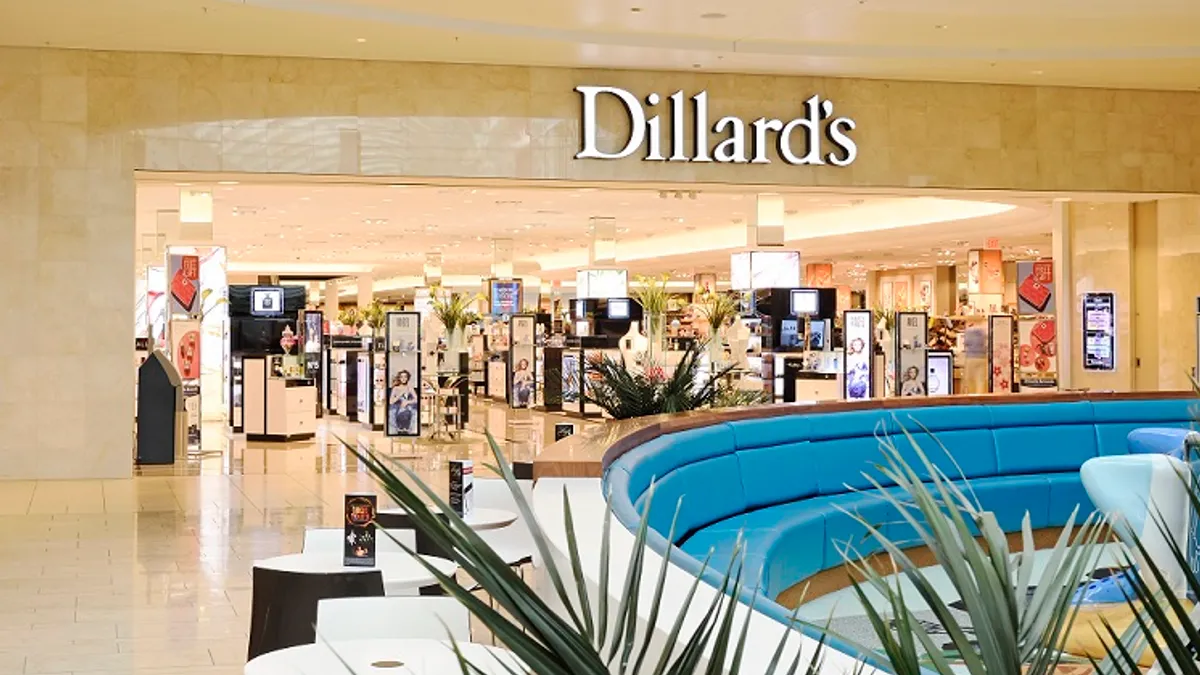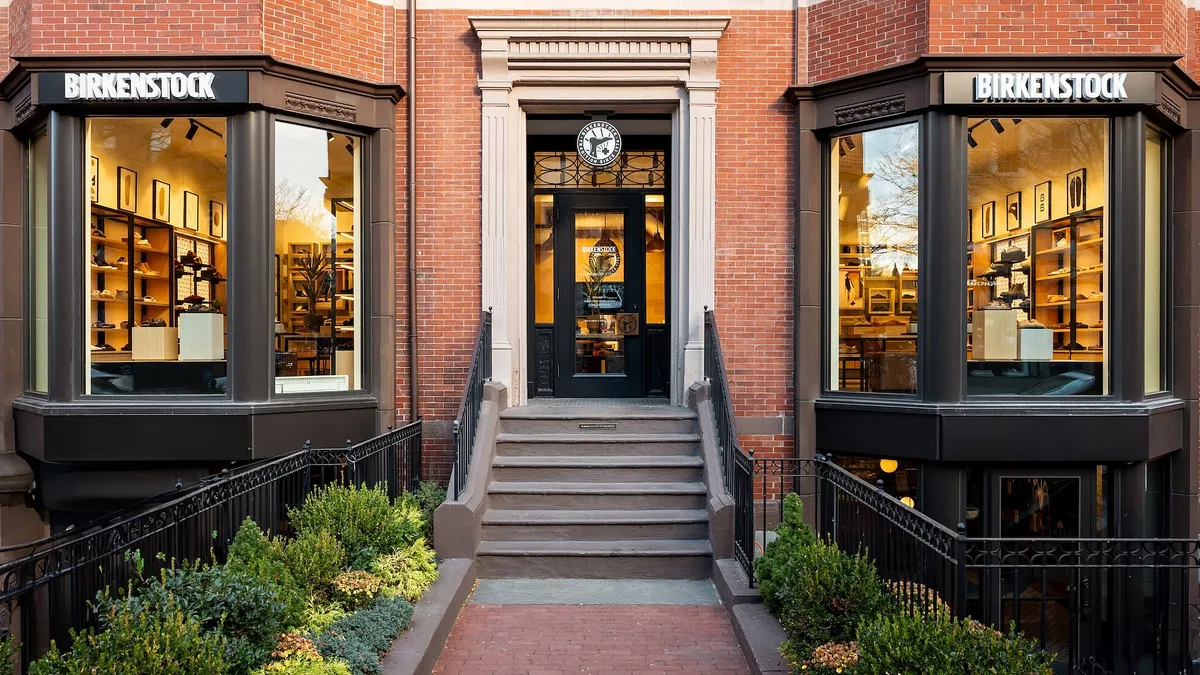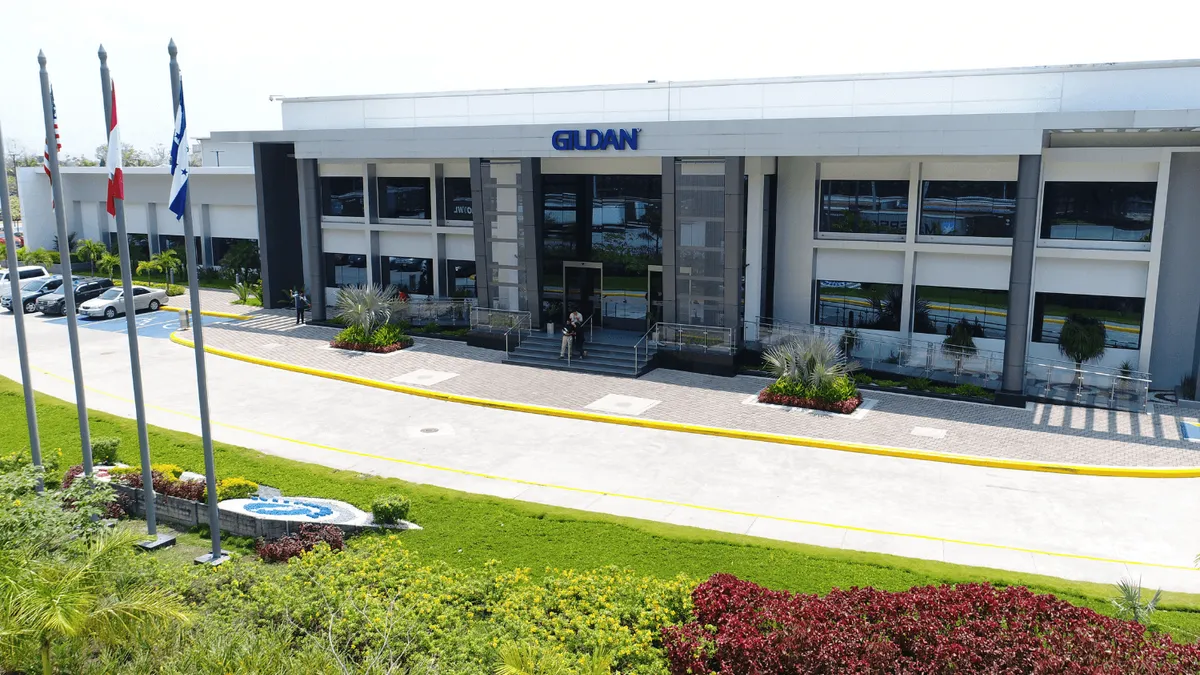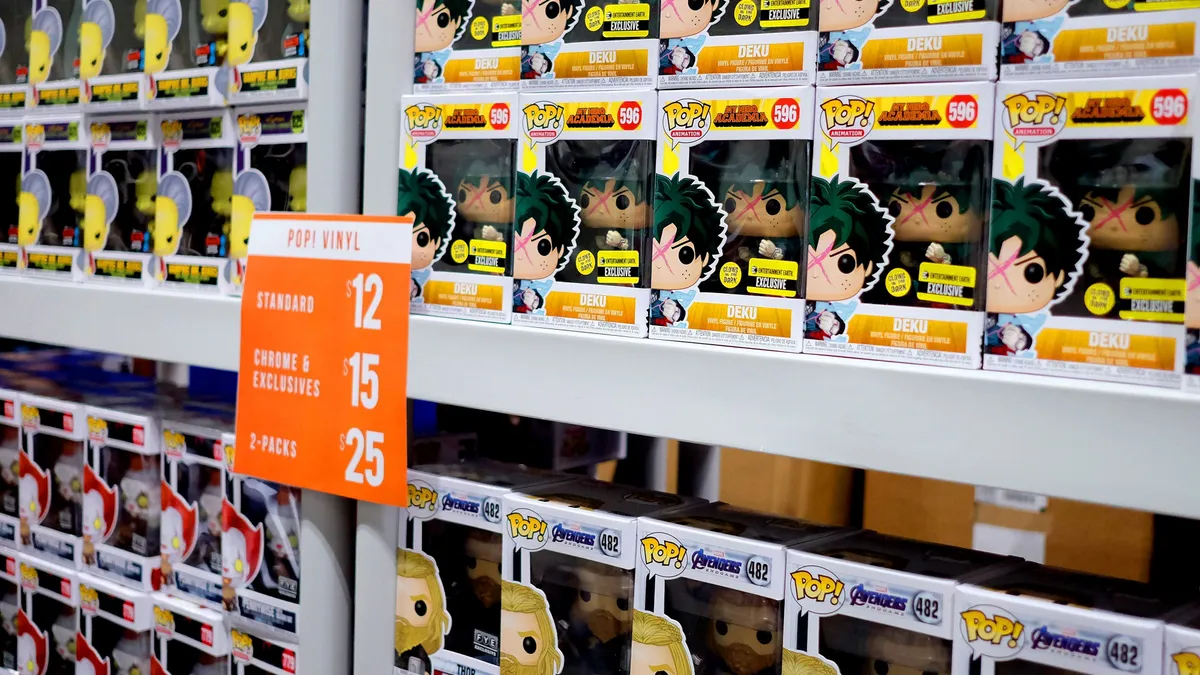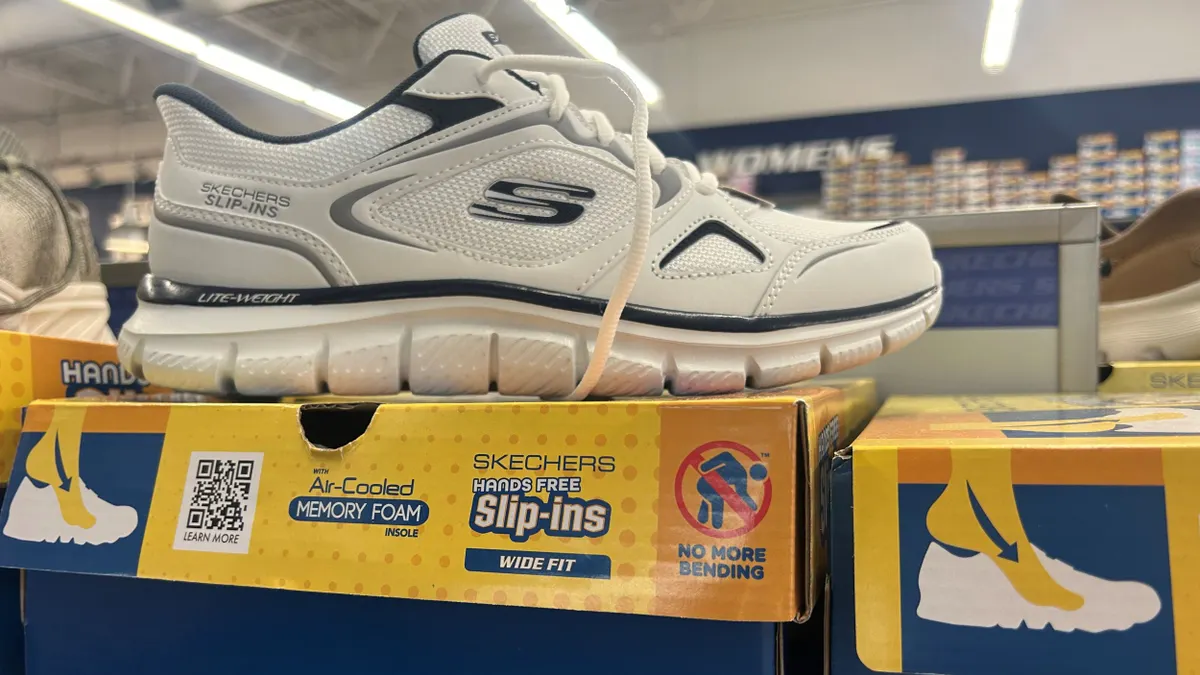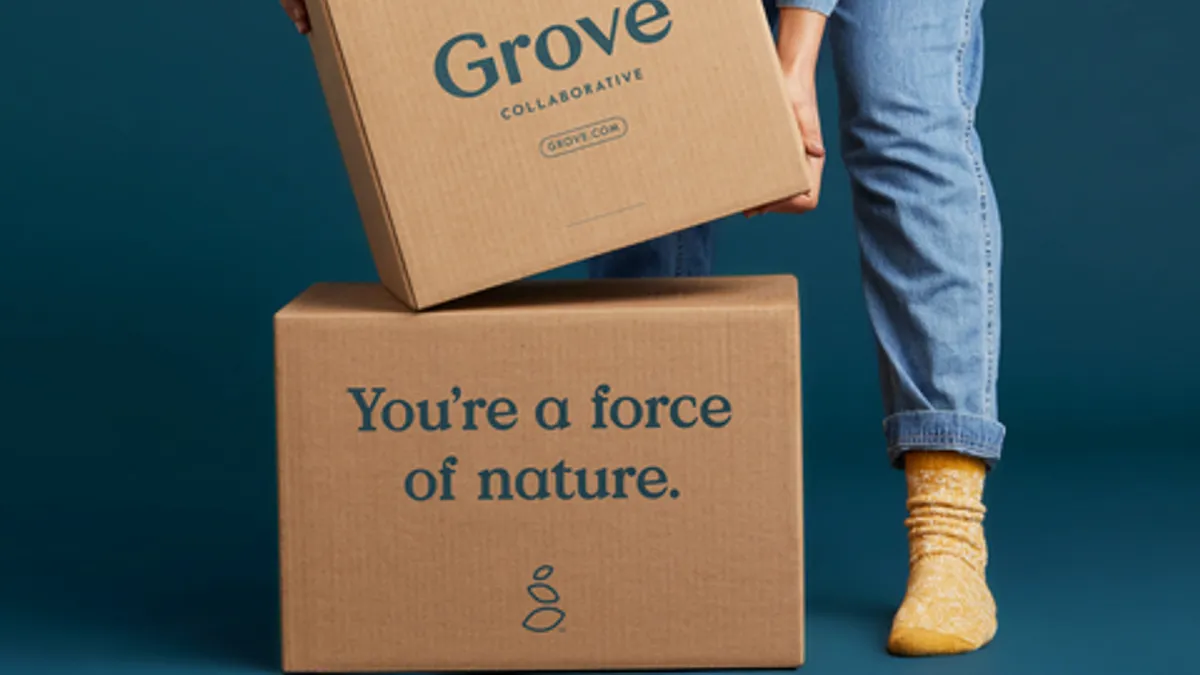In a May report, analysts with Moody's described an emerging Darwinian landscape for the industry, where the largest retailers with the healthiest balance sheets take advantage of everybody else's debt woes, underinvestment and execution missteps. The analysts called it a "survival of the fittest" in retail, which could lead to further consolidation of the industry (meaning there could be more big retail liquidations to come).
To some extent, the industry saw that play out in the first quarter of 2019. Walmart, Target, Amazon and Costco have reported relatively booming sales, growth online and sizable profits. But the quarter was tough for many that are trying to find their footing and pay off interest expenses. Many stores wrestled with negative profits, and traffic and sales declines. (And looming tariff increases can't help the retailers already struggling to hold onto sales and margins.)
With all that in mind, Retail Dive compiled key earnings data from retailers we follow that have distressed ratings from Moody's or S&P, or that have relatively high probabilities of bankruptcy as measured by CreditRiskMonitor.com.
Editor's note: Retailers that don't report earnings data are not included in this list. The list includes earnings for distressed retailers from the first reporting period of the year.
Pier 1
Sales: $314.3 million | YoY: -15.5%
Comps: -13.5%
Operating income: -$76.6 million | YoY: -$45.2 million
Net income: -$81.7 million | YoY: -$53.2 million
Debt: $245.3 million
Highlights: Pier 1's Q1 sales came $16 million short of the FactSet analyst consensus, sending shares down 16% in after-hours trading, according to MarketWatch. The home goods retailer's operating loss more than doubled year over year and its net loss nearly tripled. Interim CEO Cheryl Bachelder said in a press release that the company was "laser focused" on its turnaround initiatives. "We have chosen to prioritize our comp sales recovery with the implementation of new merchandising and marketing initiatives supported by substantive cost cutting actions," she said, adding that Pier 1 was on track to hit its target of up to $110 million in savings, mainly through cost cuts.
While the company prioritizes rebuilding its comps, they continue to plummet. Pier 1 attributed the 13.5% drop-off to lower average customer spend, which in turn resulted from changes in merchandise mix and lower customer traffic.
Still, the company has hope those trends can be reversed. "We believe Pier 1 has strong brand equity and a loyal customer, who will return for the right style stories in our assortment," Bachelder told analysts, according to a Seeking Alpha transcript. The retailer's sales are still suffering as it tries to clear out lower-priced, lower-margin merchandise purchased last year under previous leadership that "do not reflect the unique on-trend assortments that our customer is accustomed to finding when they come to Pier 1," she said.
As it works to rightsize its footprint, Pier 1 now plans to close 57 stores during the current fiscal year, 12 more than the company anticipated this spring, Bachelder said.
Rite Aid
Sales: $5.4 billion | YoY: -0.3%
Comps*: +0.3%
Operating income: -$92 million | YoY: -$40.7 million
Net income: -$99.7 million | YoY: -314.1 million
Debt: $3.6 billion
*Front end store comparable sales
Highlights: Rite Aid's stock price fell 10% on Wednesday as its operating loss doubled and net income collapsed into a loss. The company said its increasing operating loss stemmed from restructuring costs, EBITDA declines and higher tax expenses. Part of that decrease came out of lower gross profit at the drugstore retailer's pharmacy operations.
CEO John Standley told analysts Wednesday that Rite Aid also hopes to boost its top-line through a partnership with Adobe Experience Cloud that for deeper customer analytics and personalization, according to a Seeking Alpha transcript. On the retail side of its stores, the company is expanding its natural products as well as its own brands, such as Thrifty Ice Cream, which Rite Aid is taking to new markets in the East, COO Bryan Everett said. Rite Aid is also testing sales of Cannabidiol (CBD) creams, lotions and lip balms in Oregon and Washington.
In May, the company announced a new chief marketing and merchandising officer in Erik Keptner, who most recently was an executive at supermarket co-op Wakefern Food Corporation.
In addition, the retailer announced a new partnership with Amazon to allow pickups of purchases at the e-commerce giant in Rite Aid's stores. Everett said management expects the option to be available in 900 stores by the end of Q2.
J. Crew
Sales: $578.5 million | YoY: +7%
Comps: +1%
Operating income: $22.1 million | YoY: +$23 million
Net income: -$16.2 million | YoY: +17.7 million
Total debt: $1.7 billion
Highlights: J. Crew once again was buoyed by the fast-growing Madewell arm. Sales for the brand increased 15% to $132.9 million while Madewell's comps went up 10%. But the story at J.Crew's flagship brand was very different, with total sales down 4% and comps down 1% (which, to be fair, was an improvement over the 6% comps decrease in the year-ago period). Following the trend lines, the company opened 10 Madewell stores in Q1 and announced plans to close 20 J. Crew and factory stores.
Interim CEO Michael Nicholson said in a statement that "we are optimistic about our plans to reignite the J.Crew Brand with new designs, assortments and brand expressions, and remain steadfast in our commitment towards achieving Madewell's long-term growth potential."
J.C. Penney
Sales: $2.4 billion | YoY: -5.6%
Comps: -5.5%
Operating income: -$93 million | YoY: -$96 million
Net income: -$154 million | YoY: -$76 million
Total debt: $3.8 billion
Highlights: Penney CEO Jill Soltau said in a statement that the retailer has been working to build out its senior management team. To that end, the company recently brought in Shawn Gensch, previously chief customer officer for Sprouts Farmers Market, as Penney's new chief customer officer; Victor Ejarque Lopez, a former Guess merchandising executive, to spearhead women's apparel for the department stores, a pain point for Penney in recent years; and a new menswear chief.
Soltau and her team have also been working to reduce inventory, including by exiting the appliance category. Not long after Penney announced results from the punishing Q1, Moody's downgraded its credit rating deeper into distressed territory, to Caa1. Analysts with the ratings agency said in a note at the time that Penney is constrained by "structural challenges" in the department store sector, including "market share losses to off-price retailers, and the cost of investments associated with managing consumer preferences for online shopping."
Neiman Marcus
Sales: $1 billion | YoY: -9%
Comps: -1.5%
Operating income: $41.2 million | YoY: -$9.9 million
Net income: -$31.2 million | YoY: -$11.3 million
Debt: $4.5 billion
Highlights: Merchandising missteps, stemming in part from slower fashion cycles from certain designers, hurt the luxury department store retailer's sales, CEO Geoffroy van Raemdonck told analysts. "Over the last 12 to 18 months in luxury, the brands with a really strong point of view have done very very well," he said, noting that the retailer's customer base, while loyal, has high expectations for an exclusive assortment and personalized service.
While Neiman is contemplating selling its fast-growing MyTheresa e-commerce unit (which has been the subject of legal tussling), Raemdonck said that its Bergdorf Goodman brand and website also hold potential for growth. As it tries to pay down its $4.5 billion debt load, Neiman this year cut a deal with lenders to extend looming maturities out another couple of years, to 2023 and 2024.
Ascena
Sales: $1.3 billion | YoY: +0%
Comps: +0%
Operating income: -$249 million | YoY: -$200.5 million
Net income: -$237.9 million | YoY: -$197.7 million
Debt: $1.4 billion
Highlights: Ascena announced in May it would wind down the nearly 60-year-old Dressbarn banner, with its 650 stores and 6,800 employees. The move to sell the long underperforming unit was to strengthen the apparel retailer's overall financial performance, which worsened in the most recent period. The announcement came less than two months after Ascena completed the sale of Maurices to a private equity firm.
Ascena's other brands are struggling as well. Comps fell 3% for the companies plus fashion banners Lane Bryant and Catherines, fell 5% at kids' banner Justice and fell 4% at Dressbarn. The premium fashion brands, which include Ann Taylor and Loft, were the bright spot in the most recent period, with comps up 5%.
Stein Mart
Sales: $314.2 million | -3.8%
Comps: -1.7%
Operating income: $6.5 million | -$3.3 million
Net income: $4 million | -$3.4 million
Total debt: $153 million
Highlights: Stein Mart CEO Hunt Hawkins blamed the retailer's drop in comp sales on a late start to spring in the South and West and said in a statement that his team expected comp trends to improve later this year with initiatives slated to roll out this fall. The retailer also announced in May it would install self-service Amazon Hub Lockers in nearly 200 of its 283 stores. Stein Mart said it hoped the lockers would drive traffic to stores.
Overstock.com
Sales*: $362.6 million | YoY: -17.6%
Comps: N/A
Operating income: -$36 million | YoY: +$18.4 million
Net income: -$42.9 million | YoY: +$11.6 million
Total debt: $3.1 million
*Retail revenue
Highlights: Cost-cutting helped narrow Overstock's Q1 loss. "[E]xpense management has been aggressive," CEO and founder Patrick Byrne told investors in a letter. "We have taken a tremendous (>25%) amount of cost out of our expense structure in the last 5 months. We are lean and fit as an organization."
The retailer is looking into a possible sale of its e-commerce business (which helped push legal expenses up to $11.8 million in the quarter). One key to boosting its online business — and a hedge against having to compete with Amazon, the loss-making Wayfair or other players — is its loyalty program. Membership in the paid Club O program went up 32% during the year.
Byrne raised eyebrows in May when he sold 900,000 of his shares in the company to, he said, "fund a variety of projects," including various charity projects and the company's blockchain business. Byrne defended the move at length, noting he announced plans to do so more than a year ago.
Destination Maternity
Sales: $94.2 million | YoY: -8.7%
Comps: -7.2%
Operating income: $1.6 million | YoY: $-0.1 million
Net income: $130,000 | YoY: -$84 million
Debt: $22.3 million
Highlights: Chief Financial Officer Dave Helkey described the start to the year, with its 7.2% fall in comps, as "challenging." The report of the sales and profit declines at the apparel retailer joined news that its CEO, Marla Ryan, agreed to step down. Ryan is to stay on during the transition as part of the "Office of the CEO" group — along with Helkey and board member Lisa Gavales — which will direct the company as it searches for a new chief.
Ryan's departure adds to the management turnover at the troubled retailer. She had joined in November, and had previously joined the board as part of a "dissident" group of directors installed by activist investors. And the permanent CEO Ryan replaced had lasted for just months as well. It's yet another hiccup in a rocky turnaround effort, which has seen Destination Maternity closing stores and wrestling with margin losses and inventory piles.
Francesca's
Sales: $87.1 million | YoY: -13.2%
Comps: -13%
Operating income: -$9.7 million | YoY: -$5.2 million
Net income: -$10.1 million | -$6.3 million
Debt: $10 million
Highlights: Coming out of Q1, Francesca's said it would close at least 30 stores and hold off on remodels until its finances stabilize. It closed eight underperforming stores during Q1, though it added three as well and does plan to open another. Interim CEO Michael Prendergast said Thursday morning that Q1 results met management's expectations, and that changes to its merchandising have begun to pay off.
"Based on the success of our newer product, we have decided to accelerate markdowns on slower selling legacy product with the goal of selling it through by the end of the second quarter," he said in a statement. "As the composition of our inventory continues to improve with a higher percentage of new product, we believe we can drive meaningful improvement in comparable sales in the second half of the year."
Tailored Brands:
Sales: $781.4 million | YoY: -4.5%
Comps: -3.2%
Operating income: $30.3 million | -$22.6 million
Net income: $7.1 million | YoY: -$6.8 million
Debt: $1.2 billion
Highlights: Comparable sales fell across all of Tailored Brands banners in Q1. The declines were most dramatic at Men's Wearhouse, where comps fell 4.5%, and Moores, where they shrank 4.6%. Jos. A. Bank and K&G performed relatively better, but comps were still negative, falling 0.7% and 0.5% respectively. CEO Dinesh Lathi said that earnings outperformed expectations, as did sales at Jos. A. Bank and K&G.
The retail company plans new brand campaigns for Men's Wearhouse and Jos. A. Bank while emphasizing its custom business, including by testing custom suit selections via tablet. "I'll remind you that we still have work ahead of us both to transform our customer-facing experience to one that can generate sustainable and profitable growth and to execute and invest in a more focused manner with a clear goal of continuing to generate solid free cash flow while we transform the experience," Lathi said on an analyst call.








